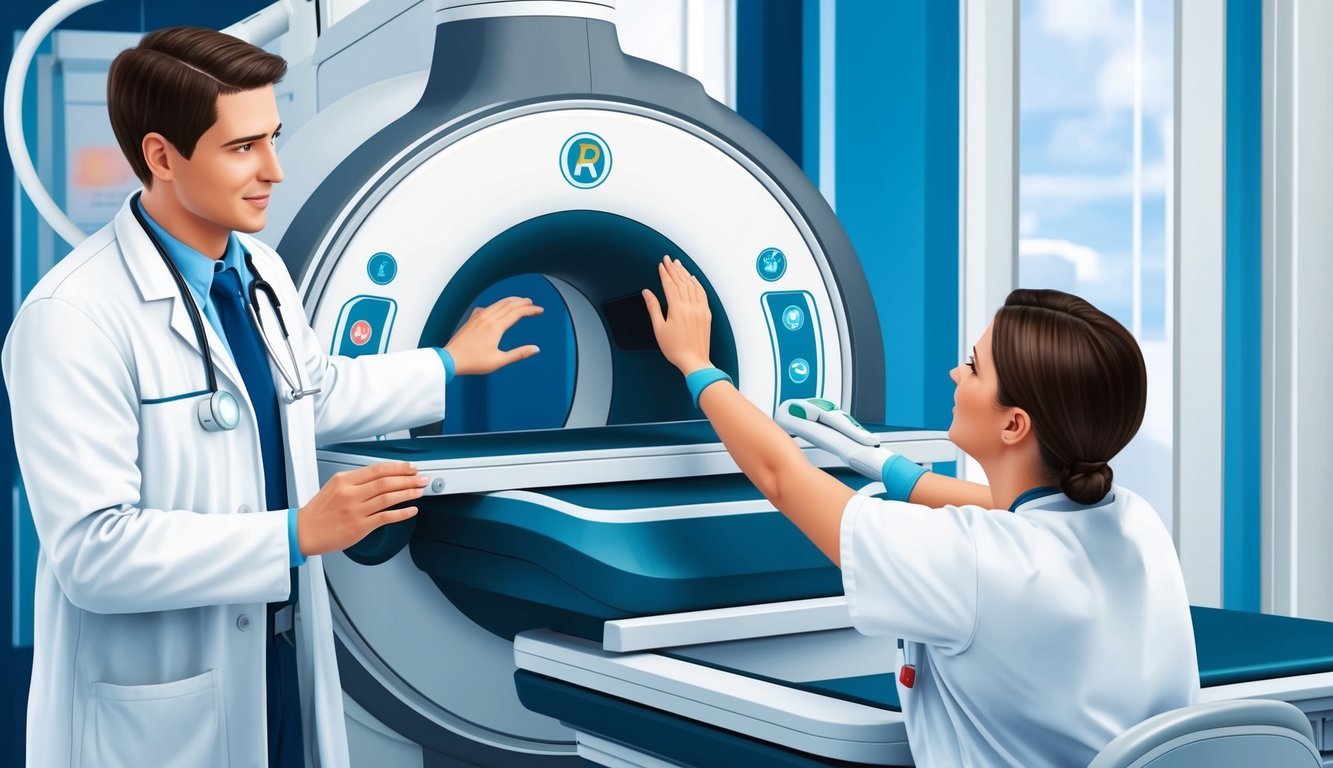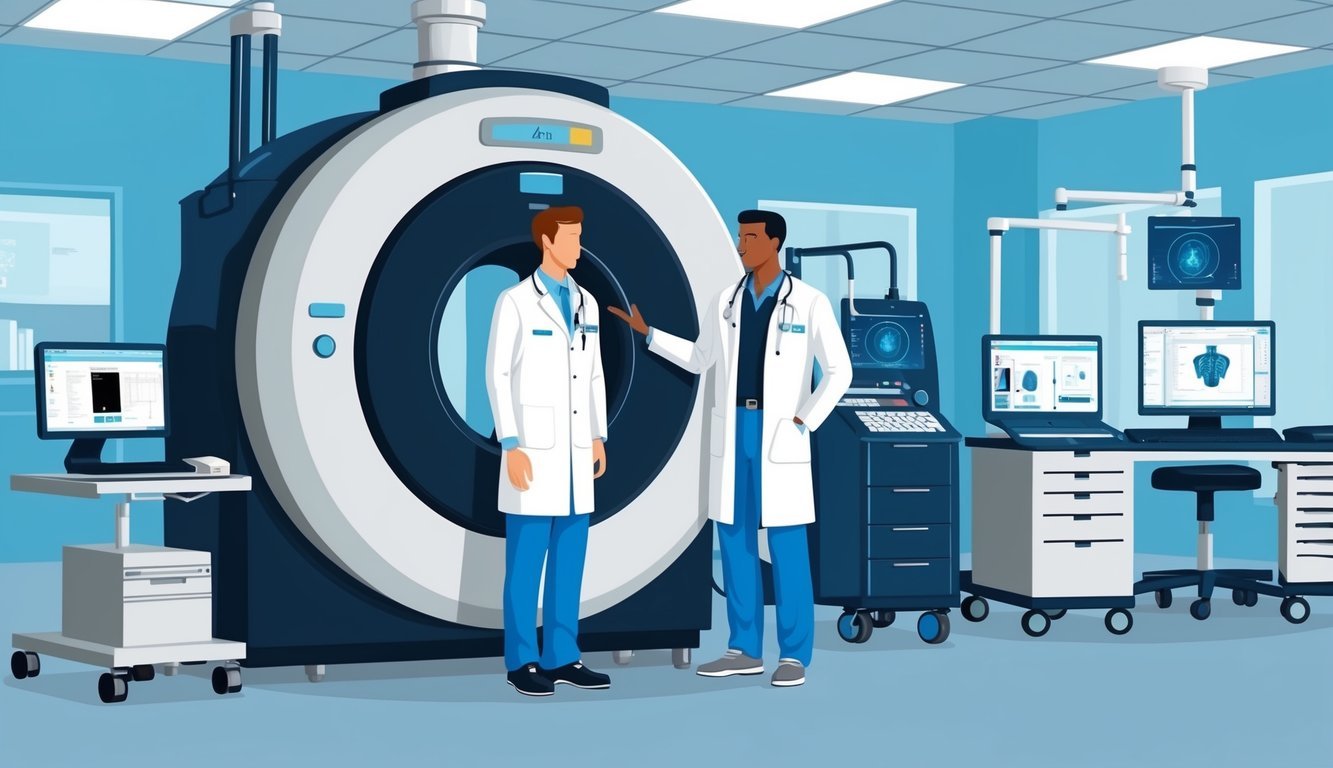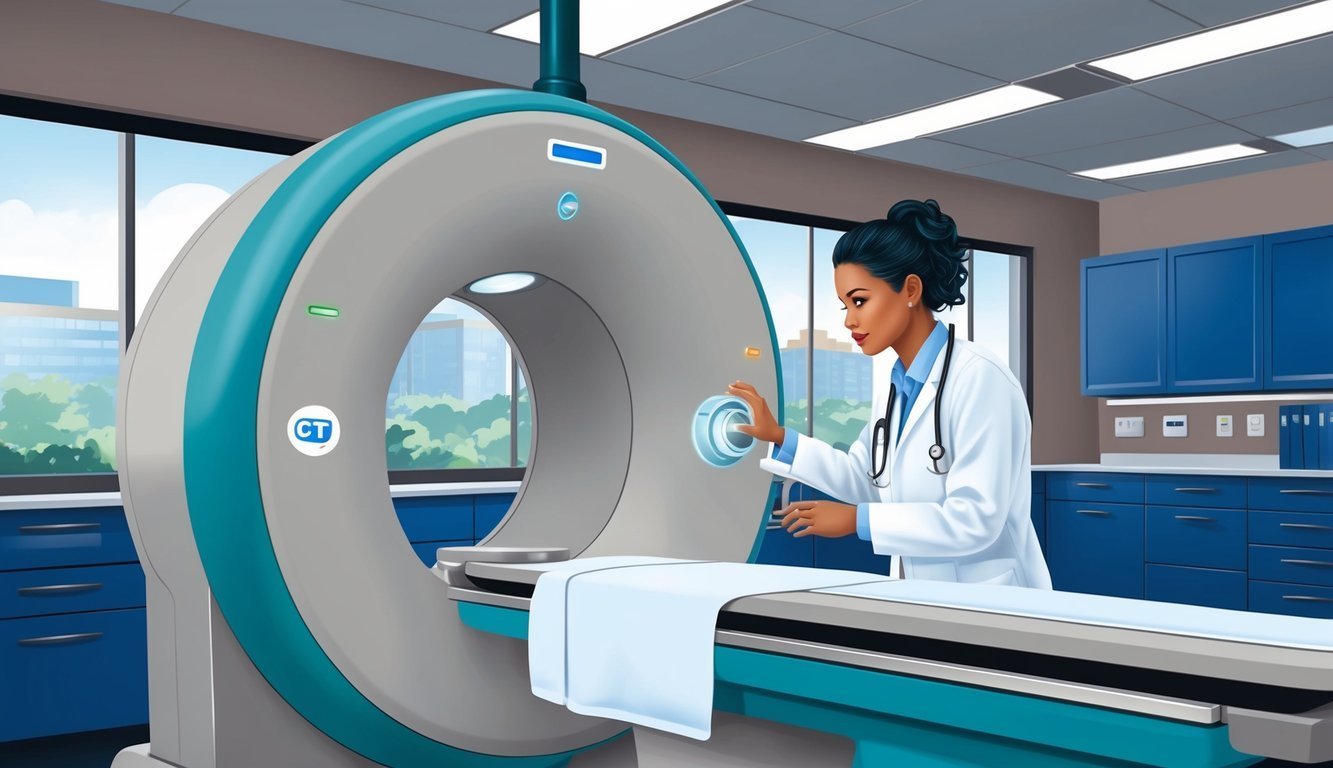As you explore the field of radiologic technology, understanding the potential earnings can significantly influence your career decisions.
The average salary for radiology techs varies by state, experience, and specialization, often ranging from $50,000 to over $90,000 annually.
This financial insight serves as a crucial factor during your job search or when considering further education.
Radiologic technologists play a vital role in healthcare, performing diagnostic imaging procedures to assist in patient care.
With the increasing demand for healthcare services, the job outlook for radiology techs remains strong, combining growth opportunities with competitive wages.
By familiarizing yourself with salary trends and factors affecting them, you can better navigate your career path in this rewarding field.
If you’re interested in specific salaries by state or the impact of education on your earning potential, there are numerous resources available to help you gather this essential information.
You can find detailed salary comparisons and job outlook analyses at Radiology Schools 411 and Nurse.org, which provide updated data relevant to your career planning.
The Role of a Radiology Tech

Radiology technicians, also known as radiologic technologists, play a critical role in healthcare by using advanced imaging technologies.
These professionals contribute to patient care and diagnostics through various specialized skills and knowledge, which include education, responsibilities, and potential career pathways.
Education Requirements
To become a radiology tech, you typically need an associate degree in radiologic technology, although some positions may require a bachelor’s degree.
Accredited programs combine classroom instruction with hands-on training.
You will study subjects such as anatomy, radiation physics, and patient care.
Additionally, clinical experience is essential, often achieved through internships or externships.
Many employers prefer candidates with certification, which can be obtained through the American Registry of Radiologic Technologists (ARRT).
This certification demonstrates your competence and enhances your job prospects.
Key Responsibilities
Radiology techs are responsible for operating imaging equipment to produce high-quality images.
Your main duties will include:
- Preparing patients for procedures, ensuring they understand the process.
- Positioning patients accurately to capture the required images.
- Managing imaging equipment, including MRI and X-ray machines.
- Maintaining patient safety by applying appropriate radiation protection measures.
- Collaborating with other healthcare professionals to assist in diagnoses.
Your role may also involve keeping detailed records of procedures, patient histories, and image quality assessments.
Strong attention to detail is crucial as these images are vital for accurate diagnoses.
Career Advancement Opportunities
As a radiology tech, you have various pathways for career advancement.
After gaining experience, you can specialize in areas like MRI, computed tomography (CT), or diagnostic medical sonography.
Pursuing additional education, such as a bachelor’s or master’s degree, can prepare you for managerial positions or advanced clinical roles.
You may also consider certifications in subspecialties, which can increase your employment opportunities and salary potential.
Participating in professional organizations and continuing education courses can further enhance your skills and marketability in the field.
Understanding Radiology Tech Salaries
Radiology tech salaries are influenced by various factors such as experience, location, and the specific demands of each job.
Understanding these aspects can help you assess potential earnings in this field.
Factors Influencing Salary
Multiple elements can impact radiology tech salaries.
Key factors include:
- Experience Level: More experienced technologists typically command higher salaries.
- Geographic Location: Areas with a higher cost of living generally pay more. For instance, positions in California tend to offer higher compensation compared to states like Mississippi.
- Type of Employment: Hospitals may pay differently than outpatient clinics or private practices.
According to recent data, the highest-paying states for radiologic technologists include California, Massachusetts, and the District of Columbia, where salaries can reach up to $114,123 annually.
Factors like additional certifications or specializations can enhance earning potential further.
Average Salary Across the U.S.
As of 2022, the national average salary for radiologic technologists is approximately $67,180, with a median salary reported at around $63,710.
Here’s a brief overview of average salaries across different states:
| State | Average Salary |
|---|---|
| California | $114,123 |
| Massachusetts | $92,285 |
| New York | $85,330 |
| Rhode Island | $83,230 |
| Texas | $66,449 |
Metropolitan areas often display even higher salaries due to demand and cost of living adjustments.
Salary by Experience Level
Experience significantly contributes to your earning potential in radiology technology.
- Entry-Level (0-1 year): Expect to earn around $50,000 to $60,000.
- Mid-Career (2-5 years): Salaries can increase to approximately $65,000 to $75,000.
- Experienced (5-10 years): Salary ranges typically rise to $80,000 or more.
- Veteran (10+ years): Highly experienced professionals may earn over $90,000 annually.
Specialized roles, such as MRI or CT technologists, can also command higher wages depending on the facility’s needs.
You can leverage this information to negotiate your salary effectively.
Geographic Variations in Salary

Salaries for radiology techs can vary significantly based on geographic location.
Understanding which states offer the highest salaries and how cost of living impacts those earnings can help you make informed career choices.
Top-Paying States for Radiology Techs
California leads the nation with the highest average salary for radiologic technologists, at approximately $103,150.
This is significantly above the national average, reflecting both demand for healthcare services and higher living costs.
Following California are several other well-paying states:
| State | Average Salary |
|---|---|
| California | $103,150 |
| Hawaii | $92,170 |
| Alaska | $87,180 |
| Massachusetts | $92,285 |
| Oregon | $83,000 |
These states tend to have robust job markets for radiology techs, supporting competitive salaries.
In contrast, states such as Mississippi and Alabama offer salaries below the national average, highlighting the geographic disparities in this profession.
Comparing Cost of Living
Cost of living is a crucial factor when evaluating salary figures.
While radiology techs in California earn the highest salaries, the high living expenses can offset those earnings.
For instance, housing, transportation, and healthcare costs in urban areas are significantly elevated.
Here’s a brief comparison of cost of living in some top-paying states:
| State | Cost of Living Index | Comments |
|---|---|---|
| California | High | Expensive housing and services. |
| Massachusetts | High | High healthcare and housing costs. |
| Hawaii | Very High | Among the highest living costs. |
| Oregon | Moderate to High | Rising costs in urban centers. |
Radiology techs in lower-cost states may find their earnings go further, even if the salary is lower.
Understanding these factors can aid you in choosing where to focus your job search.
For more detailed salary insights, you can explore resources like the U.S. Bureau of Labor Statistics.
Additional Compensation Considerations
When evaluating a radiology tech salary, it’s important to consider additional compensation factors that can significantly enhance your overall earning potential.
Not only does your base salary matter, but also the benefits and perks provided by employers, as well as opportunities for overtime and on-call pay.
Health Benefits and Perks
Many employers offer comprehensive health benefits that contribute to your overall compensation package.
These benefits may include:
- Medical, dental, and vision insurance: Essential for maintaining your health.
- Retirement plans: Employers often provide 401(k) matching contributions.
- Paid time off (PTO): This may encompass vacation days, sick leave, and holidays.
Your specific health benefits package can vary by employer and location.
For instance, hospitals may have more extensive offerings compared to outpatient facilities.
Knowing the value of these perks can significantly impact your decision when considering job openings.
Overtime and On-Call Pay
As a radiologic technician, your salary can be supplemented through overtime and on-call pay.
Overtime is typically paid at a higher rate, often 1.5 times your standard hourly salary.
This can be a lucrative option, especially in high-demand situations.
On-call pay allows you to earn extra income while waiting for potential emergency calls.
Compensation for being on-call varies by facility, but knowing your rights and options can boost your earnings.
It’s common for facilities to offer incentives for weekend or night shifts, further adding to your total compensation.
Navigating the Job Market
Understanding the dynamics of the job market for radiologic technologists is essential for planning your career.
Various factors, including job projections and preparation techniques, can significantly impact your success in this field.
Job Forecast and Outlook
The Bureau of Labor Statistics projects a growth of 6% in employment for radiologic and MRI technologists from 2023 to 2033.
This rate is faster than the average for all occupations and indicates a strong demand for skilled professionals.
Key points include:
- Approximately 16,000 job openings are anticipated each year.
- Demand arises from the need to replace workers who leave the field and from the growth of healthcare services.
This growth reflects the increasing reliance on diagnostic imaging in patient care, positioning you favorably if you choose to enter this profession.
Preparing for a Career in Radiologic Technology
To enter the field successfully, you need a solid foundation of education and experience.
The following steps can help you prepare:
- Obtain a Relevant Degree: You commonly need an associate’s degree in radiologic technology.
- Get Certified: Employers often require certification from an accredited body, such as the American Registry of Radiologic Technologists (ARRT).
- Gain Practical Experience: Completing clinical rotations during your education can enhance your practical skills.
Focusing on these preparations will boost your employability in a competitive job market.
For further resources, consider visiting relevant websites such as ARRT for certification guidance and educational opportunities.

